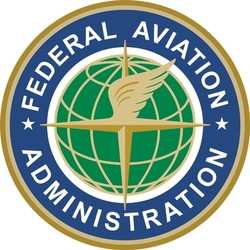Tue, Aug 23, 2011
FAA Will Modernize Design And Manufacturing Rules For
Entry-Level Certified Airplanes
The FAA has formed a Part 23 Reorganization Aviation Rulemaking
Committee (ARC), tasked with modernizing the design and
manufacturing rules for entry-level, certified airplanes, which
industry insiders say could result in lower cost for entry-level,
certified airplanes, and growth opportunities for the existing
Special Light Sport Aircraft (S-LSA) manufacturers. An additional
benefit could be an increase in safety for all light GA
airplanes.
GAMA CEO Pete Bunce

“General aviation activity on the light end has been in a
steady decline for decades,” said GAMA President and CEO Pete
Bunce. “The number of new airplanes being sold today is but a
tiny fraction of decades past. While there are a number of factors
contributing to this decline, one very prevalent issue is the
increasing cost of certification and manufacturing oversight, which
has led to a lack of cost-effective, entry-level products which
attract new pilots. GAMA believes the FAA’s vision for the
new Part 23 rules will enhance the vitality of GA for future
generations of pilots and aircraft owners.”
As the FAA has worked to address airplanes with increased
complexity and performance, the certification process for light
aircraft has become over-burdensome. The rewrite of these
certification rules will align the requirements to address simple
products with equivalent rules while eliminating the need for
special conditions on high-performance and complex aircraft such as
light jets. This makes certification and manufacturing for a
particular product more efficient, thereby decreasing the cost of
these airplanes and acting as a catalyst for the resurgence of the
light end of the market.
Additionally, the strict safety standards that are a hallmark of
U.S. certified airplanes will become even more effective as the
rules become increasingly tailored to the products and technologies
undergoing certification. GAMA hopes that authorities from around
the world will participate as observers in this process so that
these new certification standards for light aircraft will be
consistent and accepted around the globe.

GAMA says the rewrite will also assure that the FAA design
regulations are flexible in nature so they properly address
airplanes and new technologies built over the next 20 years.
Flexibility in the requirements is necessary to maintaining the
level of innovation and safety we have come to expect in general
aviation. The rewrite will also give LSA manufacturers a more
direct way to expand into the Part 23 certified market with future
products.
“The new S-LSA airplanes will certainly continue to
attract new interest in aviation, but without cost-effective,
entry-level certified aircraft, many of these new pilots will not
continue the adventure of flying and advanced ratingsn," Bunce
said. "We could not be more pleased that the FAA has taken on this
initiative."
More News
Aero Linx: Transport Canada We are a federal institution, leading the Transport Canada portfolio and working with our partners. Transport Canada is responsible for transportation p>[...]
Gross Navigation Error (GNE) A lateral deviation from a cleared track, normally in excess of 25 Nautical Miles (NM). More stringent standards (for example, 10NM in some parts of th>[...]
From AirVenture 2017 (YouTube Edition): Flight-Proven Booster On Display At AirVenture… EAA AirVenture Oshkosh is known primarily as a celebration of experimental and amateu>[...]
Aircraft Parachute System (CAPS) Was Deployed About 293 Ft Above Ground Level, Which Was Too Low To Allow For Full Deployment Of The Parachute System Analysis: The day before the a>[...]
Also: 48th Annual Air Race Classic, Hot Air Balloon Fire, FAA v Banning 100LL, Complete Remote Pilot The news Piper PA-18 Super Cub owners have been waiting for has finally arrived>[...]
 ANN's Daily Aero-Linx (06.29.25)
ANN's Daily Aero-Linx (06.29.25) ANN's Daily Aero-Term (06.29.25): Gross Navigation Error (GNE)
ANN's Daily Aero-Term (06.29.25): Gross Navigation Error (GNE) Classic Aero-TV: Anticipating Futurespace - Blue Origin Visits Airventure 2017
Classic Aero-TV: Anticipating Futurespace - Blue Origin Visits Airventure 2017 NTSB Final Report: Cirrus SR22
NTSB Final Report: Cirrus SR22 Airborne Affordable Flyers 06.26.25: PA18 Upgrades, Delta Force, Rhinebeck
Airborne Affordable Flyers 06.26.25: PA18 Upgrades, Delta Force, Rhinebeck




